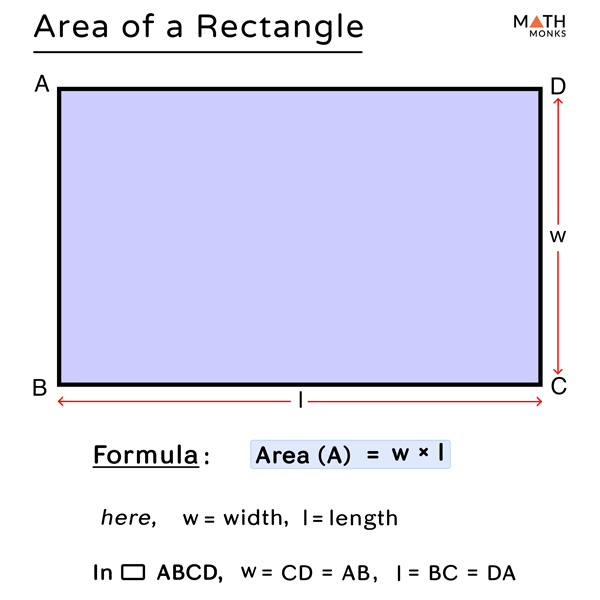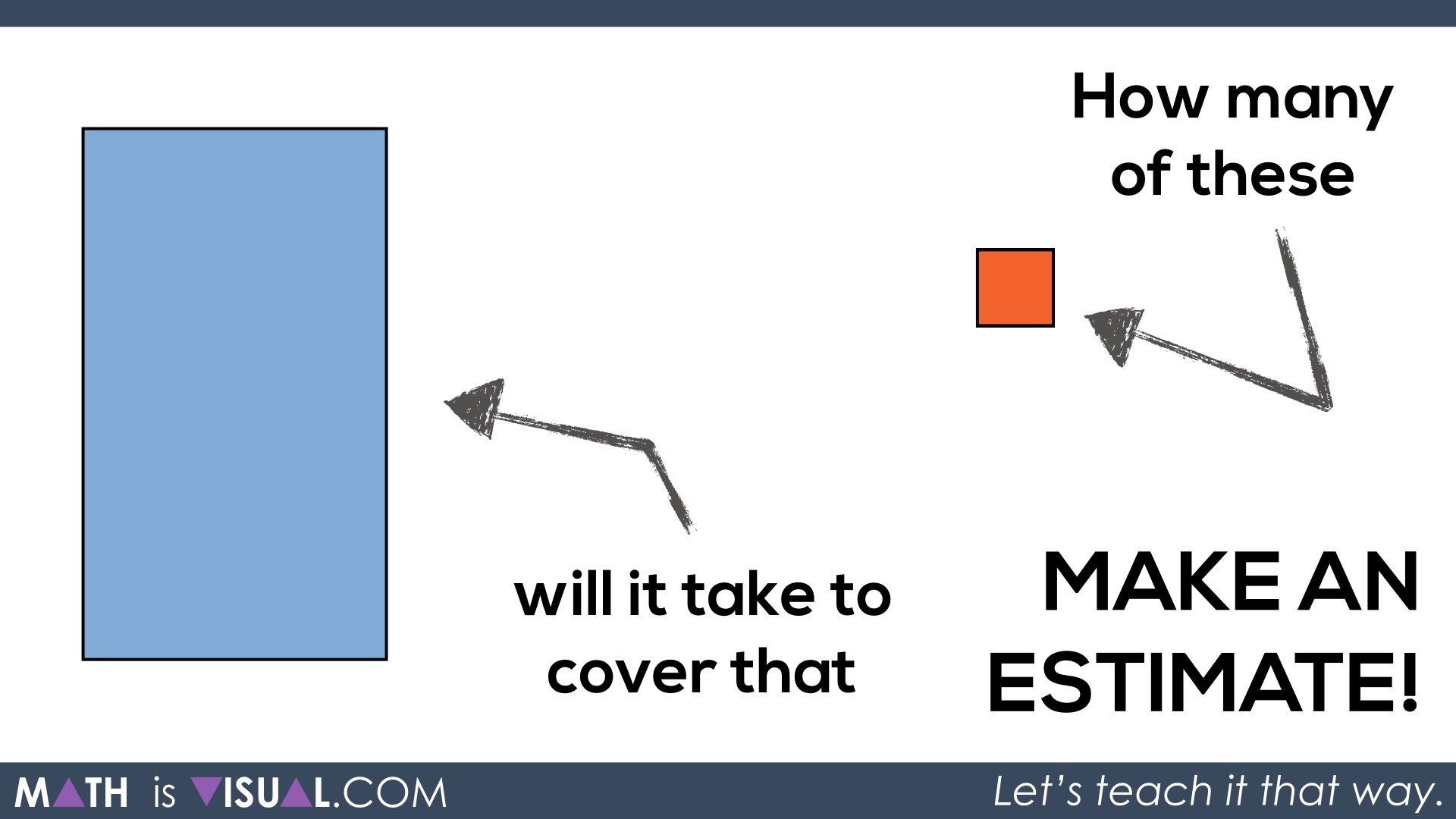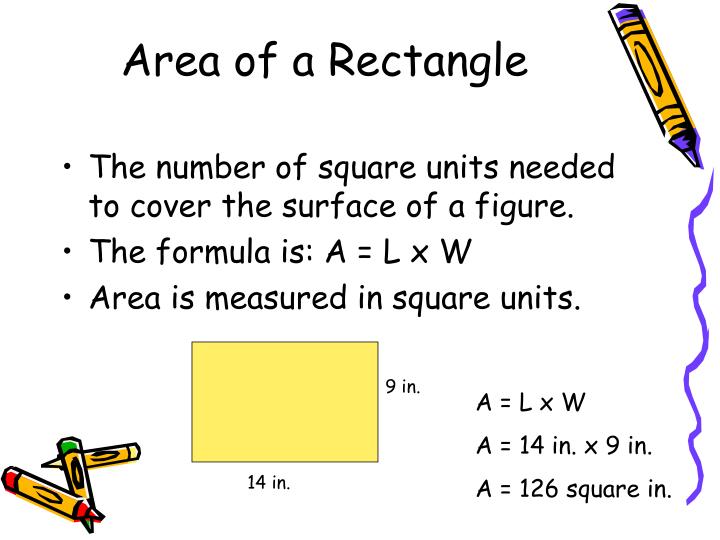
What Is Long Multiplication: Explained For Primary Parents And Kids.
#Find area of rectangle visual kids how to#
Wondering about how to explain other key maths vocabulary to your children? Check out our Primary Maths Dictionary For Kids, or try these primary maths terms: Learning square numbers also gives children a firm base from which they can learn about cube or cubed numbers, but this will not usually happen until KS3. See how this Third Space tuition lesson brings square numbers into the context of area.Īs previously mentioned, knowledge of square numbers is built on in Year 6 when pupils should be taught to use their knowledge of the order of operations ( BODMAS) to carry out calculations. Square numbers are particularly useful when finding the area of squares, which children begin to do in Year 4 ( pupils should be taught to find the area of rectilinear shapes by counting squares ) but which is built on further in Year 5 ( pupils should be taught to calculate and compare the area of rectangles (including squares). By Year 5 and Year 6, children are expected to know not only the square numbers up to 12 x 12, but also the square numbers of multiples of 10 (20 x 20 = 400, 30 x 30 = 900 etc.) How do square numbers relate to other areas of maths? This knowledge will be built on in Year 6, particularly when learning about the order of operations, when children may learn the term ‘indices’ (an ‘index number’ is the name for the little 2 used to mean ‘squared’, or the little 3 used to mean ‘cubed’). In the non-statutory notes and guidance, the curriculum advises that children understand the terms factor, multiple and prime, square and cube numbers and use them to construct equivalence statements (for example, 4 x 35 = 2 x 2 x 35 3 x 270 = 3 x 3 x 9 x 10 = 92 x 10).

Whilst your child may learn about square numbers earlier, the National Curriculum doesn’t require schools to introduce square numbers until Year 5. Square numbers for kids: When will my child learn about square numbers in primary school? See the diagrams below to demonstrate these examples. In reverse, if we knew a square had an area of 9cm 2, we’d know that each side would measure 3cm (as 3 2 = 9). As squares have equal sides, calculating the area is simple – just “square” (multiply by itself) one of its sides!įor example, a square with side length 2cm would have an area of 4cm 2 (as 2 2 = 4).


These particular collection of numbers are called square numbers (or squared numbers) for the simple reason that they form the area of a square. These are questions that many primary school children ask, but fortunately the answer is simple. What are ‘square’ numbers? Why are they not called (insert shape here) numbers? All you have to do is take the number, and multiply it by itself! Why are they called ‘square’ numbers? Here’s a handy image you can save with the above information on: How do you square a number? The first 12 square numbers (and the ones children are most likely to know due to learning their times tables) are:
#Find area of rectangle visual kids download#
Download Free Now! Square numbers up to 12 x 12


 0 kommentar(er)
0 kommentar(er)
